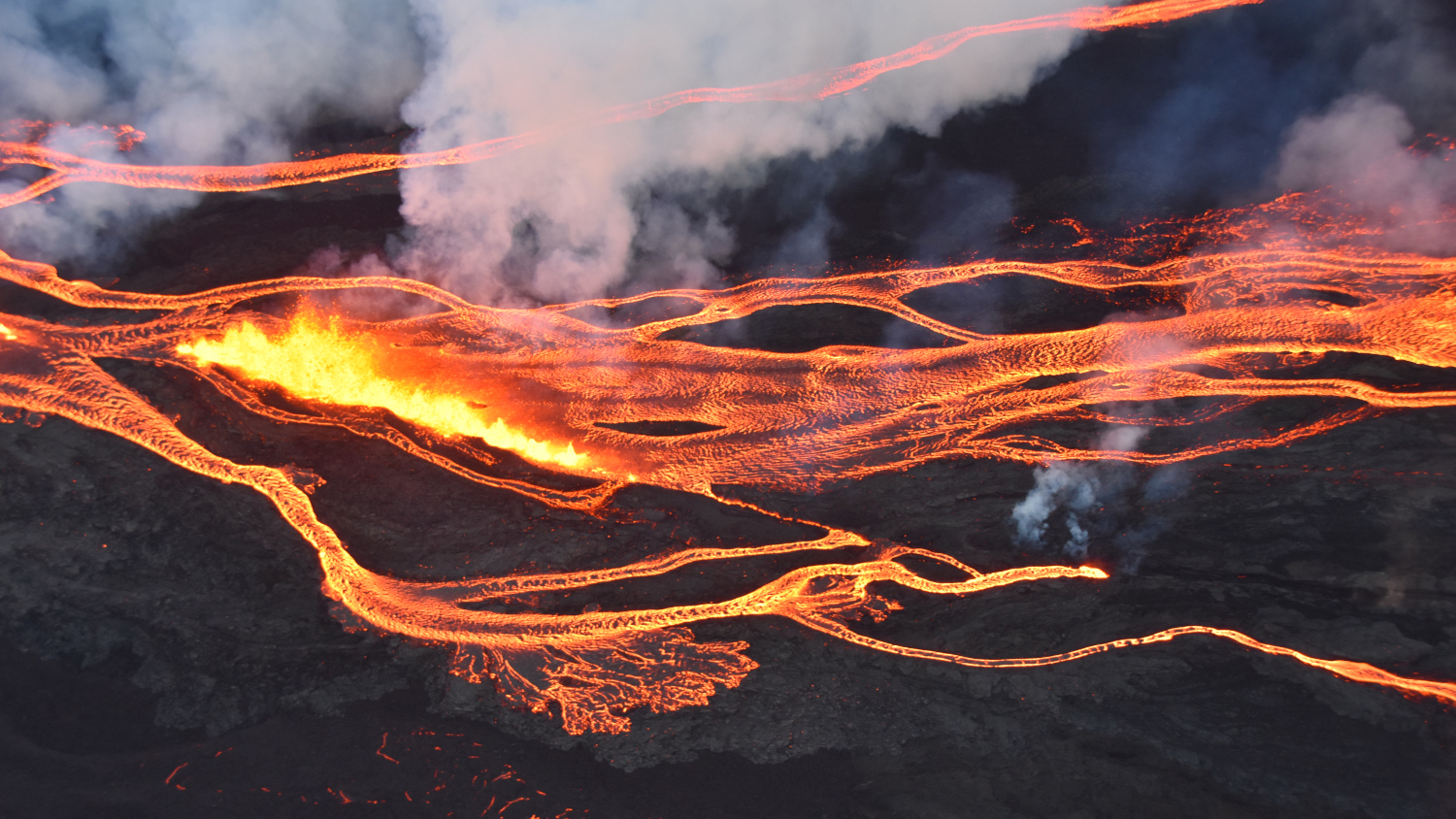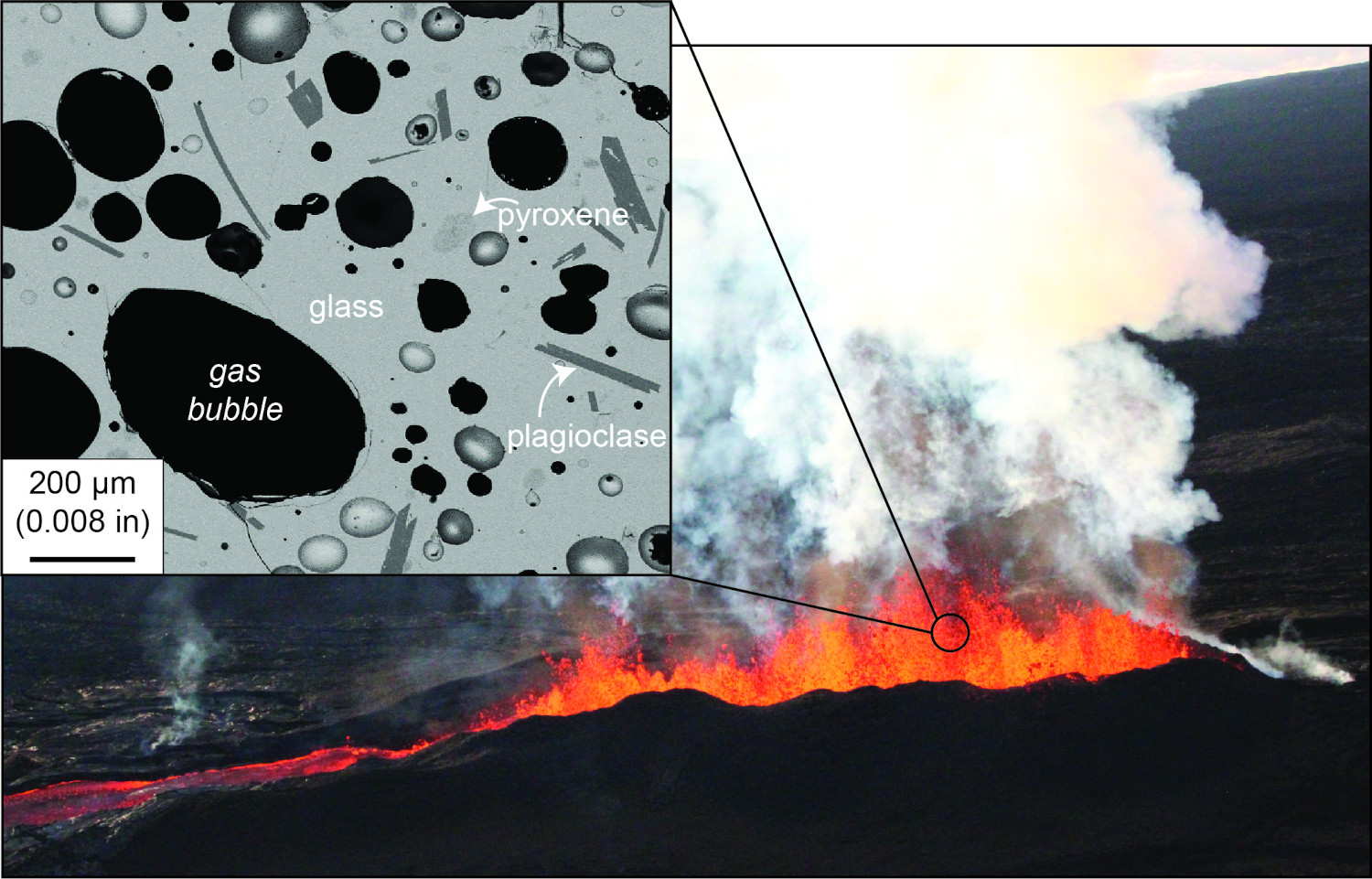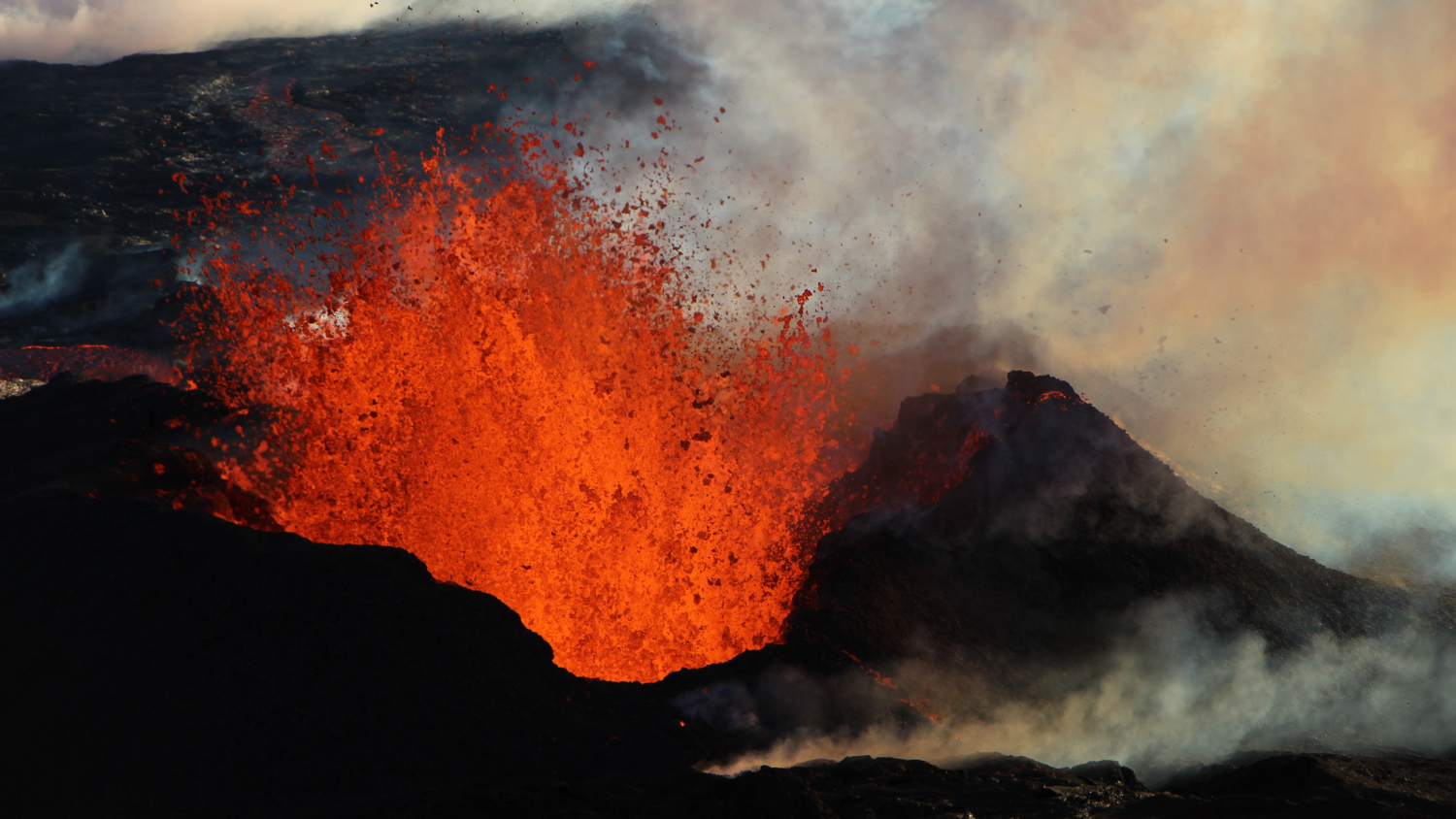
USGS: “Aerial photo captured during an overflight of the Northeast Rift Zone eruption of Mauna Loa at approximately 5-6:30 p.m. HST on November 28, 2022. This photo is looking at the line of fissure vents erupting above 10,000 ft elevation on the Northeast Rift Zone of Mauna Loa.” (Image courtesy of Civil Air Patrol)
(BIVN) – Following up on the most recent eruption of Mauna Loa volcano, USGS Hawaiian Volcano Observatory geologist Kendra Lynn writes about what was learned from lava samples in this week’s Volcano Watch article:
Understanding volcanic eruptions requires learning about where the erupted lavas come from deep within the volcano. But how do scientists get information about magma storage when they can’t visit those regions?
Analyzing lava samples can help us “see” inside a volcano, and results from the 2022 eruption of Mauna Loa gave us a window into the volcano’s plumbing system for the first time in almost 40 years.
Mauna Loa began erupting at about 11:21 p.m. HST, on November 27, 2022, for the first time since 1984. The eruption began within the summit caldera, Mokuʻāweoweo, and subsequently, a 500 m-long (1640 ft) fissure propagated towards the southwest but remained mostly within the summit.
By early morning the following day, eruptive activity had migrated from the summit into the Northeast Rift Zone (NERZ) at four fissures between 3755 and 3365 m (12,320 and 11,040 ft) above sea level, localizing to one vent by December 2. A network of lava channels fed ‘a‘ā flows that extended 19 km (12 mi) down the volcano’s north flank before the eruption ended on December 10.
The Hawaiian Volcano Observatory’s (HVO) network of monitoring instruments recorded data being analyzed in real-time to better understand the eruption. HVO field crews were also making direct observations and measurements that aided in assessing lava flow advance rates and characterizing the hazards. One facet of HVO’s monitoring efforts included collecting molten and solidified lava samples almost every day for near-real-time analysis in our laboratories, as was done during Kīlauea’s 2018 lower East Rift Zone (LERZ) eruption.
Since Mauna Loa’s eruption in 1984, the fields of petrology (the study of rocks and the conditions under which they form) and geochemistry have made great advances. New instruments and techniques are available now, which meant that we could learn far more about this eruption much faster than in 1984.
Energy-dispersive X-ray fluorescence (ED-XRF) analyses done in near-real-time with our partners at the University of Hawai‘i at Hilo revealed the composition of the erupting magma and where it was coming from. These analyses, done within 24 hours of sample collection, were later followed by secondary electron micro-analysis (SEM) and electron probe micro-analysis (EPMA) which allows us to measure compositions of minerals and glass on very small scales (a few microns or about 0.00004 inches). This type of rapid analysis wasn’t possible in 1984 and is one example of how sample chemical information was acquired much faster for the 2022 eruption.
We learned that the erupting lavas were similar to other Mauna Loa compositions erupted since 1843. The average MgO (magnesium oxide) content of the lava samples was 6.2 wt% (weight percent), slightly lower than any other Mauna Loa eruption over the past 200 years. This data can be used to calculate the temperature at which the lavas erupted and quenched, which was about 1,155 degrees Celsius (2,111 degrees Fahrenheit).

USGS: “Lava samples collected near Mauna Loa’s fissure 3 vent (shown in this December 7 overflight photo) are glassy and contain bubbles and some very small (200 microns or 0.008 inches long) minerals like plagioclase and pyroxene, as shown in the grey-scale microscope image inset.” (USGS photos by Kendra J. Lynn)
Samples collected at the vent(s) have no crystals visible to the naked eye, although minerals like plagioclase, clinopyroxene, olivine, and oxides (all common at Mauna Loa) increase in abundance and size with distance from the vent as lava flows cooled and crystallized downslope.
All of the lava produced over the duration of the nearly two-week long eruption and from all vents spanning 17 km (10.6 miles) across the summit and upper NERZ have the same composition. This tells us the entire eruption was fed by a homogenous magma, and that this nearly crystal-free, low-MgO eruption was not influenced by rift-stored magma left over from 1984.
This is different from the Kīlauea 2018 eruption, which initially produced lavas mixed with cooler stored magma from the LERZ. Instead, the composition of the 2022 Mauna Loa eruption reflects a new intrusion of magma, consistent with earthquake activity that HVO monitored 2–4 km (1.2–2.5 miles) beneath the summit in the months prior to eruption.
Each eruption provides clues into the inner workings of our volcanoes here on the Island of Hawai‘i. As technology advances, we will improve and expand the ways in which we can study the erupted lavas. We continue to monitor Mauna Loa for future signs of unrest, and future eruptions will yield more insights into Mauna Loa’s inner workings.


by Big Island Video News11:20 pm
on at
STORY SUMMARY
HAWAIʻI ISLAND - Scientists describe how lava samples from the 2022 eruption of Mauna Loa provide a window into the volcano’s plumbing system.